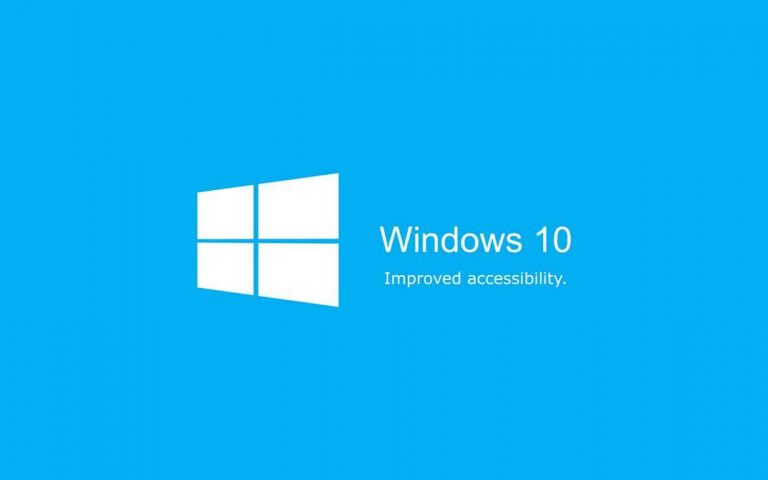In a blog post, Microsoft has outlined the strides it has made to improving accessibility on Windows 10 in the upcoming Anniversary Update.
Let’s see the changes the company has made to assist users who require the use of accessibility features.
Narrator
Screen Reading with the Narrator feature has received huge improvements. The Narrator now comes with more languages than ever, and Microsoft reaffirms it commitment to continuously adding more; the new languages that are available either in Windows or available for download are:
- Spanish (Mexico)
- Arabic (Egypt)
- Finnish (Finland)
- Dutch (Netherlands)
- Turkish (Turkey)
- French (Canada)
- Catalan (Spain)
- Norwegian (Norway)
- Portuguese (Portugal)
- Portuguese (Brazil)
- Danish (Denmark)
- Dutch (Belgium)
- Swedish (Sweden)
With these new languages, more users will be able to use the Narrator in their native language and locale.
Navigation with the keyboard has been tweaked, to allow for more familiar keyboard commands for users who screen readers other than the built-in one. According to Microsoft, these changes lead to “better ergonomics, making them easier to type”.
A new Scan Mode has been introduced. Scan Mode is a new type of navigation mode introduced to the Narrator. This feature is enabled by pressing CAPS LOCK + SPACE. Once activated, you can press SPACE to perform an action on an item of interest, for example: following a website URL or pressing a button.
Narrator can now provide deeper information on the text that it is reading, with the help of verbosity. Each verbosity level will provide differing levels of information on text it is reading. For example, level zero will only read the text, whereas level one will read the text and let you know if it is a heading. Other levels provide other information, such as text colour or the format of the text.
In conjunction with verbosity, it is now also possible to get context on the punctuation that has been used. With the command CAPS LOCK + ALT + (PLUS) and CAPS LOCK + ALT + (MINUS), you can cycle through the different punctuation modes, which are as follows: none, some, most, all and math, as well as the default value.
Auto-suggestions help users to quickly select something that they are searching for. For example, if you are typing a search query in Bing, it will begin to show you suggested search phrases. With the Anniversary Update, Narrator will now be able to give an indication when auto-suggestions are available with a verbal hint.
Making apps more accessible
Apps that are built by Microsoft have also received some overhauls in regards to accessibility.
The team behind Microsoft Edge has been working on implementing many of the modern web accessibility standards, so that the browser can assist users with accessibility needs, but also allowing developers of those websites to implement the accessibility functions into their sites and have them work seamlessly in Edge, just as they would in Chrome and other browsers.
For the Mail app, it has seen improvements to the account set-up experience, which now supports the use of a screen reader to guide the user through the process with as much support as they need to successfully set-up their mail account.
Cortana’s accessibility has been improved by implementing the use of keyboard navigational controls, such as using the arrow keys and the TAB key to navigate around Cortana’s interfaces. High-contrast mode has also been tweaked to make the UI more legible in all contrast modes. Screen reader and Windows Speech support have also been improved.
Users who are visually impaired will be happy to know that Groove has been improved to resolve several accessibility issues which appeared in high DPI set-ups, with improved scaling, as well as improvements to the app in high contrast modes. Screen reader support has also been improved, along with the addition of more shortcut keys and resolved multiple bugs with the Narrator.
Creating accessible experiences is easier for developers
Developers working with tools in the Windows ecosystem will now find that many of the tools that they use have been updated to be more accessible, but also to assist developers in implementing more accessibility features. For example, Visual Studio App Analysis Tool has received an update that assists developers in finding, triaging and fixing accessibility errors, e.g. showing warnings when controls don’t have accessible names.
The Universal Windows App platform has also seen improvements, with XAML now having better support for Mnemonics, which now allows for more Access Key customisation, whereby a developer can set a custom Access Key to perform an action. An example of this provided by Microsoft is setting an Access Key of P that triggers the press of a purchase button when the shortcut combination of ALT + P is pressed.
Continual improvement and documentation
Microsoft has reaffirmed their commitment to making Windows 10 more accessible. The company asks that users report any accessibility issues via the Feedback Hub, or by pressing CAPS LOCK + E twice to open a feedback form in Narrator. The firm will use this feedback to make further improvements.
Finally, Microsoft is continuing to update its documentation and design guidelines to make them easier to use, as well as educate developers and designers on the best practices for building an accessible environment.


